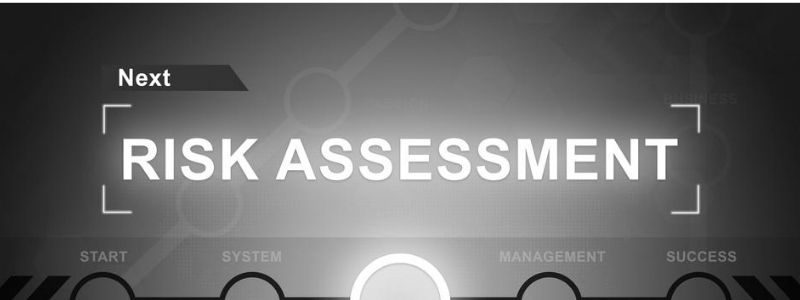A HIPAA Risk Assessment Tool can help organizations stay compliant with HIPAA and monitor data security. Providers must abide by the Health Insurance Portability and Accountability Act of 1996 (HIPAA). Because healthcare providers are embracing digital technologies to streamline workflows and communicate with patients (especially now as telehealth has increased during the pandemic), this risk assessment tool is necessary to protect patient data. The government has provided a Security Risk Assessment Tool to help organizations analyze their HIPAA risks. This is a downloadable application that assists covered entities and business associates with determining their risks for security breaches and analyzes HIPAA compliance. More on that later.
Why Are Risk Assessments Necessary?
HIPAA protects health information while also giving patients the right to obtain their data. As if protecting patient data wasn’t enough of a motivator, failure to comply can result in both civil and criminal penalties. In fact, providers face expensive fines for HIPAA violations, and fees for civil non-compliance can be as high as $50,000 per violation and up to $1.5 million per year.
With most patient information now being kept electronically, healthcare providers are especially vulnerable to online data breaches, and the current pandemic has created new opportunities for cybercriminals to phish for data. Though data phishing tied to the pandemic peaked in April and has since leveled off, it is critical that healthcare providers stay vigilant to this threat.
While mistakes happen and providers are not always able to prevent data breaches, they can prevent stiff fines by notifying (OIG Self-Disclosure Requirements ) the affected parties within a short time.
By conducting regular risk assessments, organizations can stay on top of possible breaches and react to them promptly.
What Is A Risk Assessment?
A HIPAA Risk Assessment, also known as HIPAA risk analysis or security assessment, is a thorough examination of an organization’s weaknesses and vulnerabilities. A risk assessment helps determine how to avoid data breaches. It can also help you determine whether your current procedures are working as expected.
The US Department of Health and Human Services (HHS) doesn’t tell you exactly how to perform a risk analysis for your organization. They leave it open because risk assessments vary based on the provider. For example, a large hospital will have different requirements than one for a small physician’s office.
However, the HHS does offer suggestions for what to include:
- Identify protected health information (ePHI) and how it is maintained and transmitted.
- Examine external sources of ePHI from vendors and consultants.
- Assess risk levels for security breaches of ePHI.
- Determine the impact of the potential data breach.
- Assess if current procedures are effective at preventing data leaks.
- Assess if the current transmission method of ePHI should be encrypted.
- Document the risk analysis.
- Make changes to strengthen procedural areas that showed vulnerabilities.
What Are The Benefits of Using A HIPAA Risk Assessment Tool?
Of the multitude of benefits you can receive by using a risk assessment tool, take a look at a few:
- Risk assessments are required by the HHS, and a tool can help you analyze your risk.
- Keep up to date with changing rules. Due to the recent pandemic, providers need to stay updated on changing guidelines. The HHS has announced they are relaxing some of their regulations to provide an easier way for health organizations to share information on COVID-19. They’ve also suspended some rules related to telehealth. Virtual doctor visits have been critical in providing patients with ongoing care while avoiding the spread of COVID-19.
- The tool assesses the threat level of each vulnerability. This gives providers a way to prioritize which of their procedures are the most at risk and where new implementations need to be targeted.
- Using a risk assessment tool requires organizations to periodically review their infrastructure, including all hardware, systems, and processes.
- The tool allows you to target issues before problems occur, saving money on hefty fines.
What Makes A HIPAA Risk Assessment Tool effective?
An effective tool should include the following:
- Identification of how the organization is creating, storing, and transmitting ePHI.
- Identification of possible vulnerabilities to PHI and the likelihood that it could be breached.
- Assessment of how the organization is keeping PHI secure.
- Evaluation of how HIPAA rules are being followed.
The government has provided a Security Risk Assessment (SRA) Tool to help organizations analyze their HIPAA risks. This tool has been designed by the government to help providers understand how to follow HIPAA security rules.
However, they state that the use of this tool does not guarantee compliance with all laws and it may not be suitable for all organizations. It can offer guidance, but it is not meant to be an exhaustive answer to your risk assessment.
This is true of other third-party risk assessment tools that you can find online. They may provide some benefit to targeting problem areas, but they will not exhaustively ensure you are HIPAA-compliant.
Why you should consider an outside HIPAA Risk Assessment
While downloadable tools can help identify some problem areas, HIPAA rules are complex and changing. It may be better for specialized consultants with expertise in HIPAA regulations and understanding of healthcare operations, to provide a complete HIPAA Risk Analysis. This should ensure that vulnerable areas are identified, by providing a Gap-Analysis-Report.
Maybe, more importantly, an expert consultant should stand ready to assist you in the implementation of findings and recommendations listed in the Gap-Analysis-Report!

